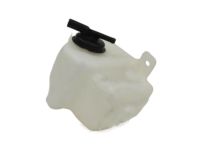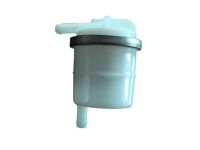Why choose HyundaiPartsDeal
- Exceptional Quality
At HyundaiPartsDeal.com, we prioritize providing only top-quality, genuine parts for your Hyundai Excel vehicle, ensuring it gets the most optimal performance and reliability. We're the best online store for genuine parts. All our products go through precise testing before being sold to ensure the best of the best for your vehicle.
- Value For Money
If you want to maintain your vehicle running at its peak, HyundaiPartsDeal.com is the right online store to get the genuine parts and accessories you need without breaking your wallet. High-quality parts and discounted prices come together here. You get the same reliability while enjoying significant cost savings by purchasing OEM parts for your repairs or upgrades.
- Quick Delivery
HyundaiPartsDeal.com partners with national major carriers to make OEM parts available for you in an expedited fashion. Also, all of our items are on hand, which ensures your order is shipped as soon as it's placed.
Popular Genuine Hyundai Excel Parts
- Engine Parts View More >
- Trim Parts View More >
- Chassis Parts View More >
- Electrical Parts View More >
- Transmission Parts View More >
- Body Parts View More >
Shop Genuine Hyundai Excel Parts with HyundaiPartsDeal.com
The Hyundai Excel, also known as the Pony, Pony Excel, Presto, Mitsubishi Precis, and Hyundai X2, was a subcompact car produced by Hyundai Motor Company from 1985 to 2000. As South Korea's first front-wheel-drive car, the Excel holds historical significance in the country's automotive industry. It replaced the rear-wheel-drive Pony and was later succeeded by the Hyundai Accent in 2000. Originating from the second-generation Mitsubishi Mirage, the Excel featured an original sheet metal design and was available as a 3- or 5-door hatchback, as well as a 4-door sedan. In 1986, the Excel became Hyundai's first model exported to the American market, with impressive sales of 168,882 units in its first year. The first-generation Excel offered either a 1.3L 4G13 or a 1.5L 4G15 engine, producing 66 and 71 horsepower, respectively. Transmission options included 4- or 5-speed manuals and 3- or 4-speed automatics. In 1989, the second-generation Excel was introduced with a fuel-injected 1.5L 4G15 MPFI engine, generating 85 horsepower. The European market adopted the Excel nameplate in 1990, and the model's design started to resemble the Sonata. The third-generation Excel, launched in 1994, featured an upgraded DOHC 16-valve configuration, enhancing its performance. Eventually, the Excel models were phased out and replaced by the Hyundai Accent in 1999.
As Hyundai's inaugural front-wheel-drive vehicle, the Excel may have some design flaws. According to CarComplaints.com, Excel owners report issues such as premature engine failure, with symptoms including overheating, misfiring, stalling, poor fuel economy, and power loss during acceleration. Regular checks of parts such as the intake manifold gasket, fan blade, cylinder head gasket, oil filter, and air filter are recommended to mitigate these problems. Another common issue is transmission failure, characterized by difficulty in shifting gears, inaccurate gear readings, and transmission slippage. Suspected parts include the Excel's shift cable, transfer case seal, and pilot bearing, which should be inspected if such symptoms appear. Beyond these specific issues, proactive and regular maintenance of the Excel is crucial to mitigate wear and tear of parts that may go unnoticed. For instance, a properly functioning hood cable is vital for those who prefer DIY maintenance to avoid injuries. Furthermore, to ensure driving safety, parts such as the headlight, fog light, wiper blade, and seat belt should be kept in good condition. For a pleasant driving experience, maintaining the cabin air filter and antenna in good working order is also important.
In terms of quality and longevity, OEM parts are top-tier. This is because they are made according to Hyundai's demanding factory specifications and go through strict quality control.We welcome you to purchase brand-new Hyundai Excel parts from our website. We offer a huge selection of genuine parts at the lowest prices possible. Do you want to have greater assurance of quality, reliability, durability, and affordability? You're at the right place, all our OEM Excel parts come backed with the manufacturer's warranty.
Hyundai Excel Parts Questions & Answers
- Q: How to remove the coolant reservoir?A: To remove the coolant reservoir, start by lifting the cap off and withdrawing the overflow hose. Then, remove the coolant reservoir-to-fender bolt and the windshield washer-to-coolant reservoir bolt. Lift out the coolant reservoir and set it aside. The windshield washer reservoir can remain in place. To reinstall, simply reverse the removal steps.
- Q: How to clean the in-tank fuel filter and draining the fuel tank?A: Although it's not a regularly scheduled maintenance item, occasionally cleaning the in-tank fuel filter will prevent it from becoming clogged. You can also use this procedure anytime you need to drain the fuel tank (for example, before you remove it). Since you will be draining the fuel tank in this procedure, make sure the tank is nearly empty before beginning. Disconnect the cable from the negative terminal of the battery. Raise the rear of the vehicle and support it securely on jackstands. Place blocks in front of the front wheels. Place an approved gasoline container under the drain plug. Unscrew the plug and pull it straight down so it will clear the fuel tank outlet pipe. Thoroughly clean the filter with a brush and solvent. If the filter is damaged, replace it by pulling the old filter out of the drain plug and pressing in the new filter until its claws fit snugly into the locking holes in the plug. Carefully slide the filter up over the fuel tank outlet pipe and tighten the drain plug securely. Use a funnel to pour the drained fuel back into the fuel tank. Reconnect the negative battery terminal.




















































